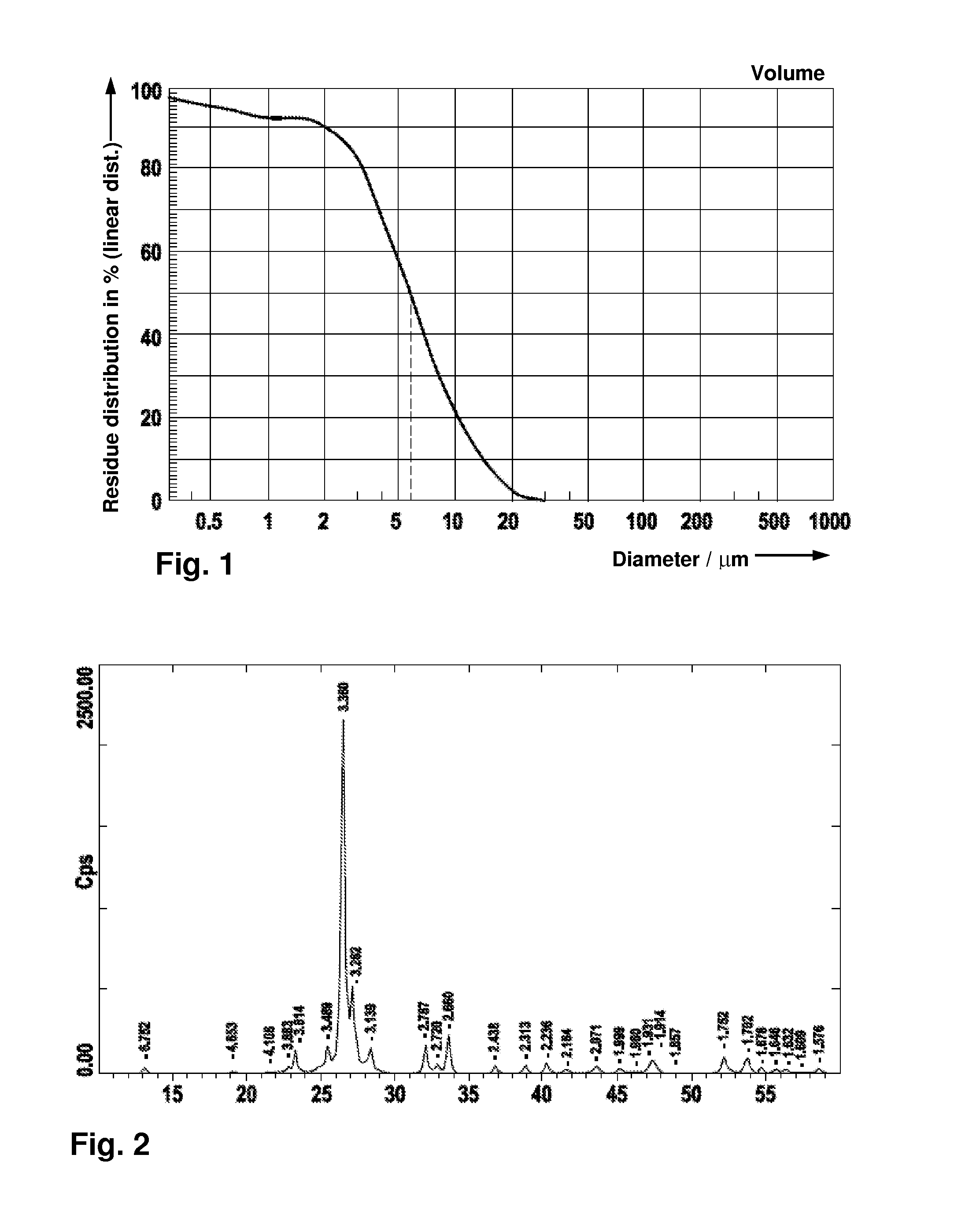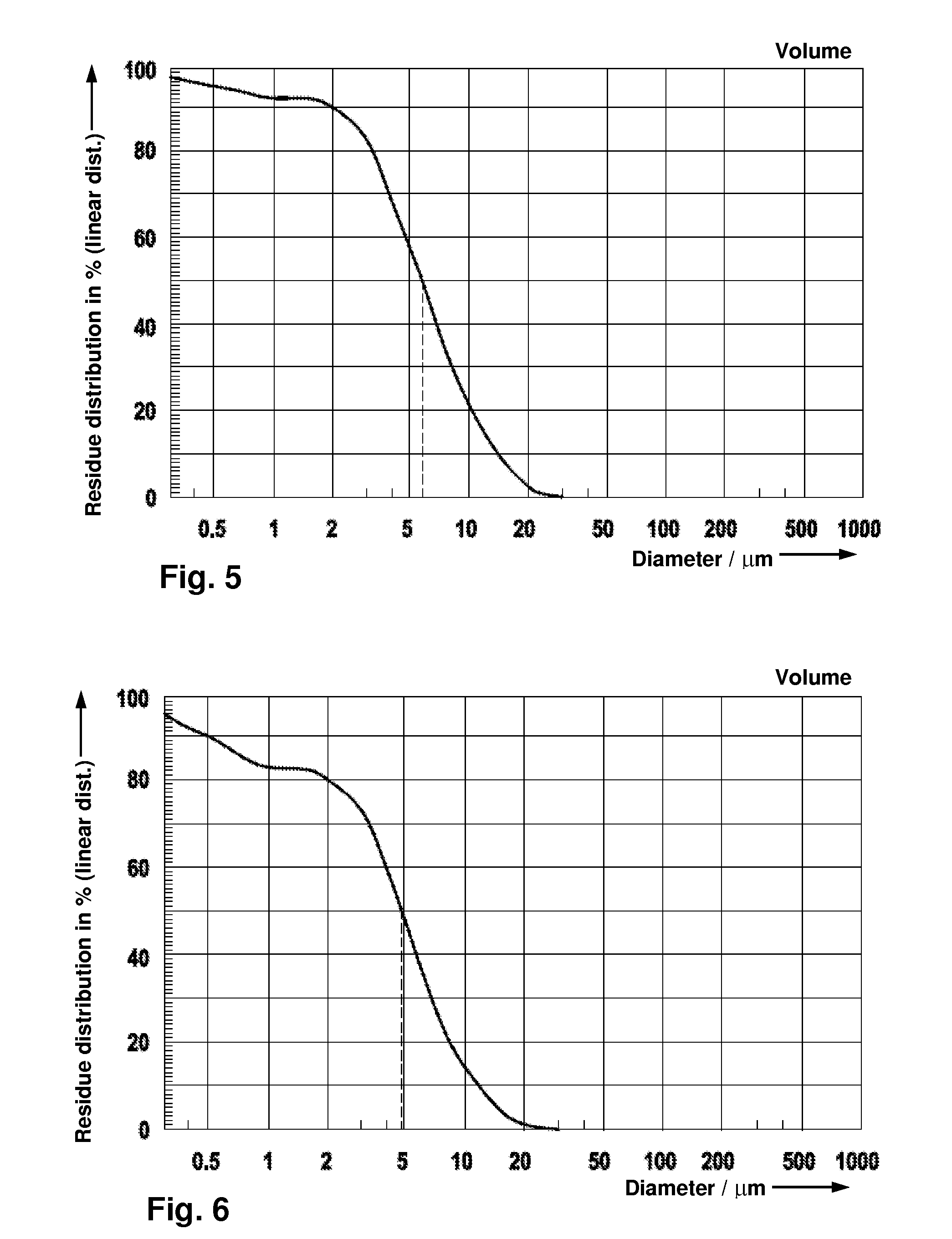Method for the production of nanocrystalline bismuth-molybdenum mixed oxide
a technology nanocrystalline molybdenum, which is applied in the direction of metal/metal-oxide/metal-hydroxide catalyst, physical/chemical process catalyst, nickel compound, etc., can solve the problem of inability to achieve uniform particle size of molybdenum mixed oxide, inability to control crystallization, in particular with regard to crystallite size,
- Summary
- Abstract
- Description
- Claims
- Application Information
AI Technical Summary
Benefits of technology
Problems solved by technology
Method used
Image
Examples
embodiment examples
General:
[0052]The essential advantages of the preparation with the aid of the pulsation reactor are the reduction of the overall preparation time, the small outlay (only the reactor is needed) and the fact that there is no drying and treatment of the product. The desired BET surface areas, particle sizes and also the crystallinity of the material can be varied in one step by the pulsation reactor.
example 1
Comparison Example (According to DE 10 2006 015710 A1)
[0053]A solution I was produced by dissolving nitrates of iron, cobalt, nickel, manganese, potassium in the proportions by mass 23.2:47.26:29.28:0.0646:0.2067 in 3.5 liters of water, heating to 40° C. accompanied by stirring and adding a nitric acid solution of 0.1 mol Sm3+ and 2 mol HNO3.
[0054]For a solution II, a solution of 2118.6 g ammonium heptamolybdate in 2.7 l water was prepared at 40° C., 4.4 g phosphoric acid as well as 0.428 g Aerosil 200 (Degussa) and 14 g aluminium oxide in 1 l water were added to it.
[0055]Solution II was added slowly and accompanied by intensive stirring to solution I. In a separate vessel, a solution III, consisting of 790 g bismuth nitrate and 0.72 mol HNO3, was prepared. The coprecipitate for the production of the active catalyst phase was obtained by adding this solution to the other active components.
[0056]The coprecipitate was stirred intensively for 12 hours. The obtained suspension was dried...
example 2
According to Aspects of the Invention
[0060]60 l demineralized water was weighed into a 100-l vessel. This was heated to 50° C. The following substances were added to the demineralized water in succession:
[0061]
Colour ofQuantitysolution afterSubstance[g]additionNickel nitrate solution (Ni:6599.25green12%)Iron nitrate × 9H2O1664.68greenZinc nitrate × 6H2O1202.67greenAmmonium heptamolybdate × 4H2O4344.48green-yellow
[0062]The suspension was heated to 75° C. accompanied by stirring. The suspension was cooled to 64° C. and then 3290 g Ludox® AS40 was added. The bismuth nitrate solution (2.5 l 10% nitric acid+991.04 g bismuth nitrate×5H2O) was then added at a temperature of 62° C. The suspension now had a temperature of 58° C. and was stirred for 10 minutes.
[0063]The particle-size distribution of the suspension was determined: the results are to be seen in FIG. 1.
[0064]The suspension was injected into the pulsation reactor at a dispensing rate of 20 kg / h. The temperature was 450° C. The XR...
PUM
| Property | Measurement | Unit |
|---|---|---|
| temperature | aaaaa | aaaaa |
| size | aaaaa | aaaaa |
| crystallite size | aaaaa | aaaaa |
Abstract
Description
Claims
Application Information
 Login to View More
Login to View More - R&D
- Intellectual Property
- Life Sciences
- Materials
- Tech Scout
- Unparalleled Data Quality
- Higher Quality Content
- 60% Fewer Hallucinations
Browse by: Latest US Patents, China's latest patents, Technical Efficacy Thesaurus, Application Domain, Technology Topic, Popular Technical Reports.
© 2025 PatSnap. All rights reserved.Legal|Privacy policy|Modern Slavery Act Transparency Statement|Sitemap|About US| Contact US: help@patsnap.com



